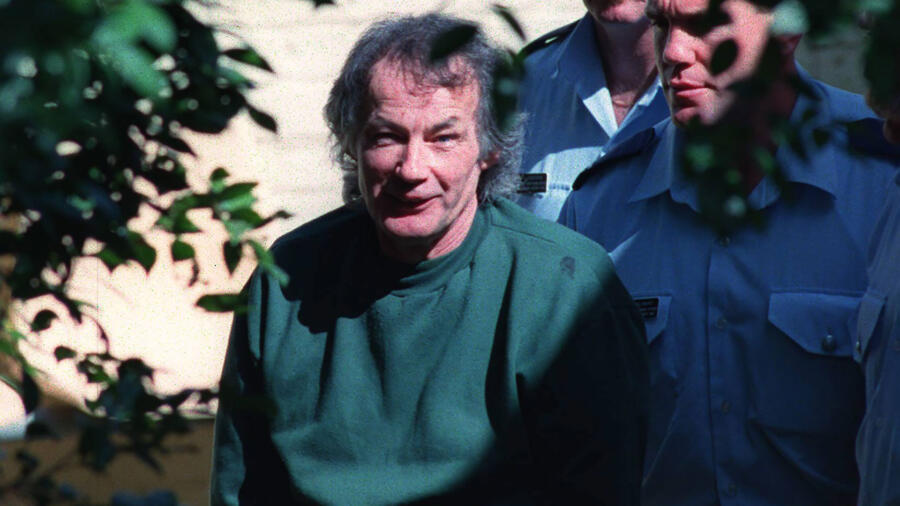Warning: The following contains disturbing descriptions of violence, including sexual violence. Reader discretion is advised.
The bodies of seven missing backpackers were found in Australia’s Belanglo State Forest between September 1992 and November 1993. In 1996, Australian Ivan Milat was convicted of their murders and other charges. The serial killer became known as the Backpack Murderer.
Milat never confessed to the killings, or to other disappearances in which he was a prime suspect. However, one young relative seems to have believed in Ivan Milat’s guilt. Matthew Milat referred to his great-uncle’s crimes after committing his own murder in 2010.
Missing Backpackers Are Discovered
In September 1992, runners in Belanglo State Forest stumbled upon a body. Police then found another corpse nearby. They were British backpackers Caroline Clarke and Joanne Walters, who’d last been seen in April 1992 as they were going to a highway to hitchhike.
A year later, in October 1993, a man looking for firewood in Belanglo State Forest found more human remains. Couple James Gibson and Deborah Everist had been planning to hitchhike before they’d gone missing in late December 1989.
[Watch the exclusive North American premiere of Ivan Milat: Buried Secrets on A&E Crime Central.]
The next month, authorities located three more bodies of hitchhiking backpackers. The first, Simone Schmidl, who hadn’t been seen since January 1991, was followed by Anja Habschied and Gabor Neugebauer, who disappeared on December 26, 1991.
The victims were all found face down with their arms behind their backs, covered with leaves and branches. Many had been brutally stabbed or shot. One had been beheaded. Almost all showed signs of sexual assault.
Tracking a Serial Killer
Attention fell on the Milat family during the police investigation. Several of the 10 Milat brothers had known criminal histories. One of them, Ivan, had been jailed for burglary and break-ins in the 1960s; in the 1970s, he was tried for rape, though he was acquitted. Milat also worked for the Roads and Traffic Authority.
Wayne Petherick, an associate professor of criminology at Australia’s Bond University, says Milat’s job would have offered regular exposure to people who were hitchhiking. “Hitchhikers were a good population for someone like Milat to target,” says Petherick. “It may be some time before they are missed if contact with their friends or families is only sporadic. …It also allows you a lot of time to dispose of their bodies and personal items.”
In January 1990, British backpacker Paul Onions was hitchhiking. After he accepted a ride, the driver stopped the car and pulled a gun on him. Spotting a rope in the vehicle, Onions fled and flagged down another car. That driver took him to police to report the incident.
In 1994, after police admitted to the media that they were dealing with a serial killer, Onions contacted authorities with information about his own encounter and escape. Onions flew to Sydney and identified Ivan Milat as the man who’d attacked him years earlier. This allowed police to obtain warrants to raid Milat’s home on May 22, 1994. The search revealed that Milat had kept camping gear and other items belonging to the dead backpackers.
Milat’s possession of “trophies” from these victims provided an undeniable link to their deaths.
Psychologist Dr. Holly Schiff, who is familiar with Milat’s case, tells A&E True Crime it isn’t unusual for killers to hold onto items they see as proof of their abilities: “Milat probably thought he was so intelligent, cunning and clever that he could get away with it, which would explain why he made little effort to hide any of the evidence.”
Trial and Questions
Ivan Milat, 49 at the time, was charged with killing the seven backpackers on May 31, 1994. He denied responsibility for the crimes, insisting he was innocent. “I don’t know who did it,” he later said. “It was up to them to prove my guilt, not for me to prove my innocence.”
Milat remained in custody until his trial in 1996. His attorneys tried to argue that one of his brothers could be the real killer, but Milat was found guilty of all seven deaths on July 27, 1996. He received seven life sentences for the murders, as well as an additional term for attacking Onions.
While some questioned whether Milat had acted on his own, the lead detective of the task force investigating the murders said he was convinced Milat was the only killer. Yet Justice David Hunt stated while delivering the sentence, “In my view, it is inevitable that the prisoner was not alone in that criminal enterprise.”
Ivan Milat in Prison
Following a failed escape attempt in his first year behind bars, Milat was sent to a maximum security prison in Goulburn.
Milat became a suspect in other cases, such as the disappearances of three women in 1978 and ’79, but never admitted to other crimes. He also consistently maintained he was not a serial killer. Amanda Howard, a criminologist and author who spent years corresponding with Milat, told A&E True Crime, “I believe if he had taken a lie detector test, he would probably pass it because he was so convinced of his own innocence.”
Much of Milat’s time in prison was spent trying to appeal his convictions. To draw attention to this endeavor, he initiated hunger strikes, swallowed razor blades and staples and even cut off his pinky finger. Schiff, though specifying she never professionally evaluated Milat, believes he wasn’t suicidal. “He engaged in self-harm in order to highlight the issues he was having in getting his appeal,” she says.
Ivan Milat’s Nephew Becomes a Killer
While Milat was in prison, his family members split on whether he was really guilty. His great-nephew, Matthew Meuleman, believed he was guilty.
In 2007, when Meuleman was 14, he changed his name to Matthew Milat (Milat had been his mother’s maiden name; Meuleman was his stepfather’s name). Though Matthew was a toddler when Ivan Milat was imprisoned, a friend said he would brag about his great-uncle. Then Matthew took things a step further.
In November 2010, Matthew Milat, who was 17 at the time, and his friend Cohen Klein invited their other friend, David Auchterlonie, out to celebrate his birthday. But instead of smoking marijuana as they said they planned to do, Matthew tormented and killed Auchterlonie with a double-sided axe while Klein recorded the crime on his phone. The scene of the slaying was Belanglo State Forest, the same place where Ivan Milat’s victims had been found.
Matthew Milat’s Sentence
After the murder, Matthew said to a friend, “You know me, you know my family. You know the last name Milat. I did what they do.”
Petherick likens Matthew’s mindset to that of a mass shooter looking for notoriety. “In killing his friend and riding on the family name, he guaranteed that his name would go down in history,” says Petherick.
In 2012, a 19-year-old Matthew was sentenced to 43 years in prison for his crime. He will have to serve 30 years before becoming eligible for parole.
Unlike his great-uncle, who stood by his innocence, Matthew wrote poetry about his crime in jail. One poem was called “Your Last Day.”
Matthew’s crime didn’t please Ivan Milat. Howard says that after speaking with Milat about his great-nephew, he was “shocked” and “dismayed” by his relative’s crime. “[Given] Ivan Milat always claimed his innocence, he wouldn’t boast about having another killer in the family,” says Howard.
Ivan Milat’s Death
Ivan Milat was diagnosed with terminal cancer in May 2019. As his illness progressed, police tried to get him to confess to the murders he was convicted of. But up until his death on October 27, 2019, at the age of 74, Milat maintained his innocence.
Petherick thinks Milat’s defiance aligns with his previous behavior. “Milat was a known narcissistic psychopath. They are all about maintaining control and manipulation. He knew that the police were going to try and get him to confess and if he did, he would have lost that control,” says Petherick.
Related Features:
Copycat Killers: What Moves a Violent Offender to Emulate Another?
Elusive ‘Beauty Queen Killer’ Led Double Life as a Florida Playboy
Who Murdered Sophie Toscan du Plantier? Producer’s Mysterious Death Remains Unsolved


